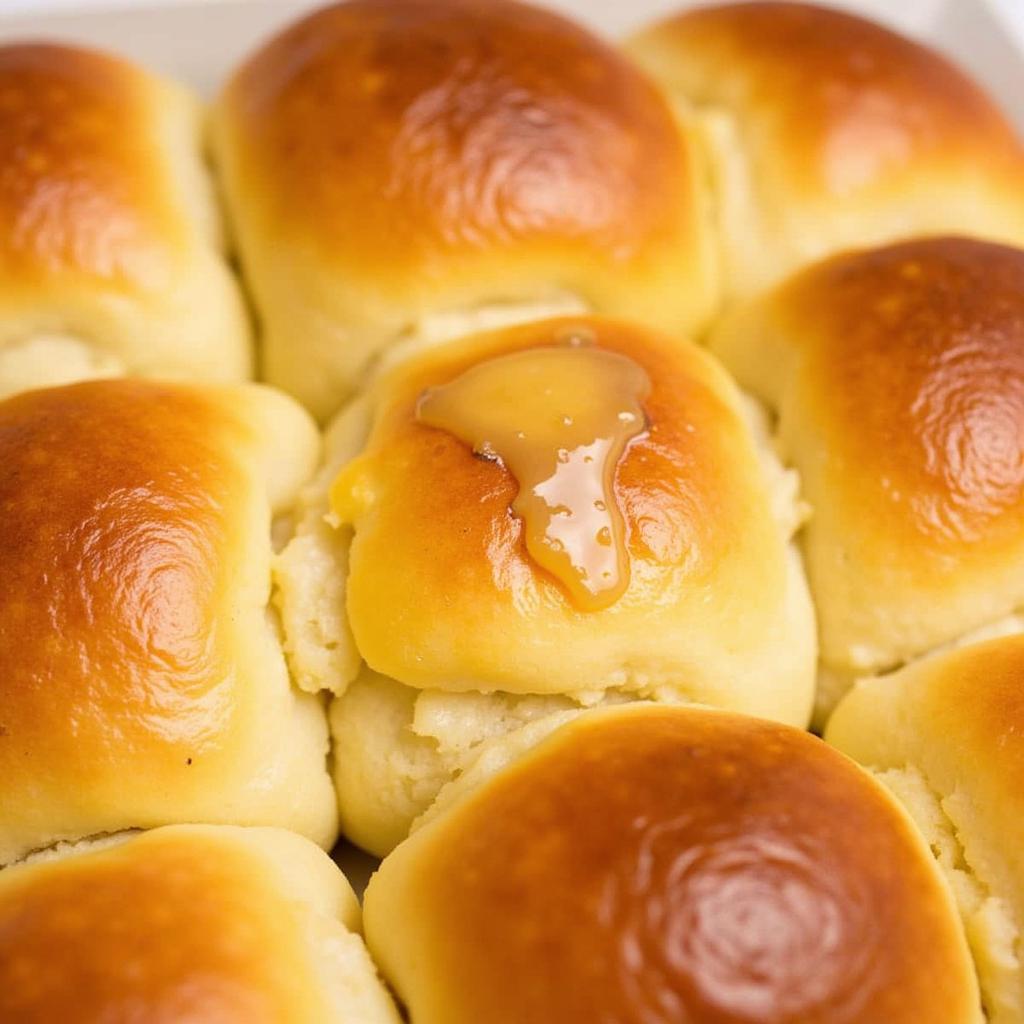Making light, fluffy dinner rolls doesn’t have to be a daunting task. With the help of a food processor, you can achieve bakery-worthy results in a fraction of the time. This guide will walk you through the process of creating delicious Food Processor Dinner Rolls, from kneading to baking, sharing tips and tricks for guaranteed success.
Unleashing the Power of the Food Processor for Perfect Dough
Using a food processor to make dinner rolls is a game-changer. It simplifies the kneading process, cutting down on time and effort. The machine’s powerful motor quickly develops the gluten in the dough, resulting in a smooth, elastic texture that’s crucial for light and airy rolls. Whether you’re a seasoned baker or a beginner, this method offers consistent results with minimal mess. This technique is especially helpful for those who find hand-kneading tiring or challenging.
Step-by-Step Guide to Food Processor Dinner Rolls
Ready to get started? Here’s a detailed guide on how to make food processor dinner rolls:
- Bloom the Yeast: In a small bowl, combine warm milk, sugar, and yeast. Let it sit for 5-10 minutes until foamy. This activates the yeast and ensures a good rise.
- Combine Dry Ingredients: In your food processor, combine flour, salt, and any other dry ingredients your recipe calls for.
- Add Wet Ingredients: With the food processor running, slowly pour in the bloomed yeast mixture, followed by melted butter or oil.
- Knead the Dough: Pulse the processor until the dough comes together in a ball. Then, process continuously for 45-60 seconds until the dough is smooth and elastic.
- First Rise: Place the dough in a greased bowl, turning to coat. Cover and let rise in a warm place for 1-1.5 hours, or until doubled in size.
- Shape the Rolls: Punch down the dough and divide it into equal portions. Shape each portion into a roll.
- Second Rise (Proofing): Place the shaped rolls in a greased baking dish, cover, and let rise for another 30-45 minutes.
- Bake: Preheat oven to 375°F (190°C). Bake the rolls for 15-20 minutes, or until golden brown.
- Cool & Enjoy: Let the rolls cool slightly before serving.
 Food processor dinner roll dough being kneaded
Food processor dinner roll dough being kneaded
Tips for Perfect Food Processor Dinner Rolls
- Don’t Over-Process: While the food processor simplifies kneading, over-processing can lead to a tough dough. Keep a close eye on the dough’s consistency and stop when it’s smooth and elastic.
- Warm Ingredients: Using warm milk and melted butter helps activate the yeast and creates a more tender crumb.
- Proper Proofing: Allowing the dough to rise properly is essential for light and fluffy rolls. Don’t rush this process.
- Brush with Butter: For a beautiful sheen and added flavor, brush the baked rolls with melted butter right after they come out of the oven.
What are the benefits of using a food processor for dinner rolls?
Using a food processor for dinner rolls saves time and effort, especially during the kneading process. It results in a consistent dough and light, airy rolls.
How long should I knead dinner roll dough in a food processor?
Knead the dough in a food processor for about 45-60 seconds, or until smooth and elastic. Avoid over-processing.
 Food processor dinner rolls brushed with melted butter
Food processor dinner rolls brushed with melted butter
Food Processor Dinner Rolls: A Culinary Delight
Making food processor dinner rolls is a rewarding experience that yields delicious results. By following these steps and tips, you can create beautiful, fluffy rolls that will impress your family and friends. These rolls are perfect for any occasion, from weeknight dinners to holiday gatherings. So, dust off your food processor and get ready to bake!
FAQ
- Can I use all-purpose flour for these rolls? Yes, all-purpose flour works well.
- Can I freeze the dough? Yes, you can freeze the dough after the first rise. Thaw it overnight in the refrigerator before shaping and proofing.
- How do I know if my yeast is still active? Active dry yeast will become foamy when mixed with warm water and sugar.
- Can I add herbs or spices to the dough? Yes, feel free to add herbs or spices to customize the flavor of your rolls.
- My rolls are dense. What went wrong? The dough might not have risen properly, or it could have been over-processed.
Expert Insight from Chef Michael Roux Jr.: “A food processor is a fantastic tool for bread making, especially for enriched doughs like dinner rolls. It creates a wonderfully even texture that’s difficult to achieve by hand.”
Expert Insight from Baker Paul Hollywood: “The key to perfect dinner rolls is proper proofing. Don’t rush the process, and let the dough double in size before shaping.”
Looking for more bread recipes? Check out our article on “Artisan Bread Making at Home.” Interested in other uses for your food processor? Our “Food Processor Hacks” post has got you covered!
Need help? Contact us at Phone Number: 02437655121, Email: minacones@gmail.com, or visit us at 3PGH+8R9, ĐT70A, thôn Trung, Bắc Từ Liêm, Hà Nội, Việt Nam. We have a 24/7 customer service team.